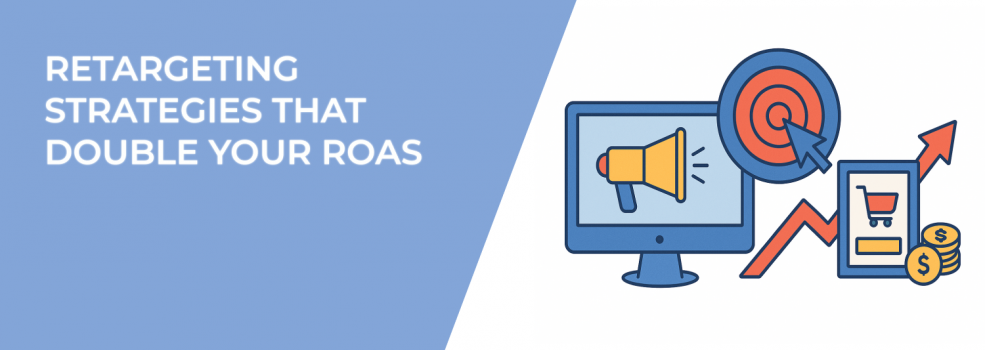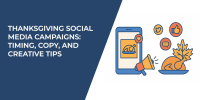Most people don’t convert the first time they visit your site — or even the second. Retargeting is your second chance.
But if your retargeting strategy only includes cart abandonment ads with generic discounts, you’re barely scratching the surface. There’s so much more you can do to increase performance, deepen relevance, and double your Return on Ad Spend (ROAS).
Let’s explore what that actually looks like — with strategies, real use cases, and deeper tactics that go beyond surface-level advice.
1. Segment by Scroll Depth and Session Length
Not all website visitors are created equal. Instead of only targeting people who visit a page or view a product, go further. Track how they behave while they’re on your site — and use that data to build smarter retargeting segments.
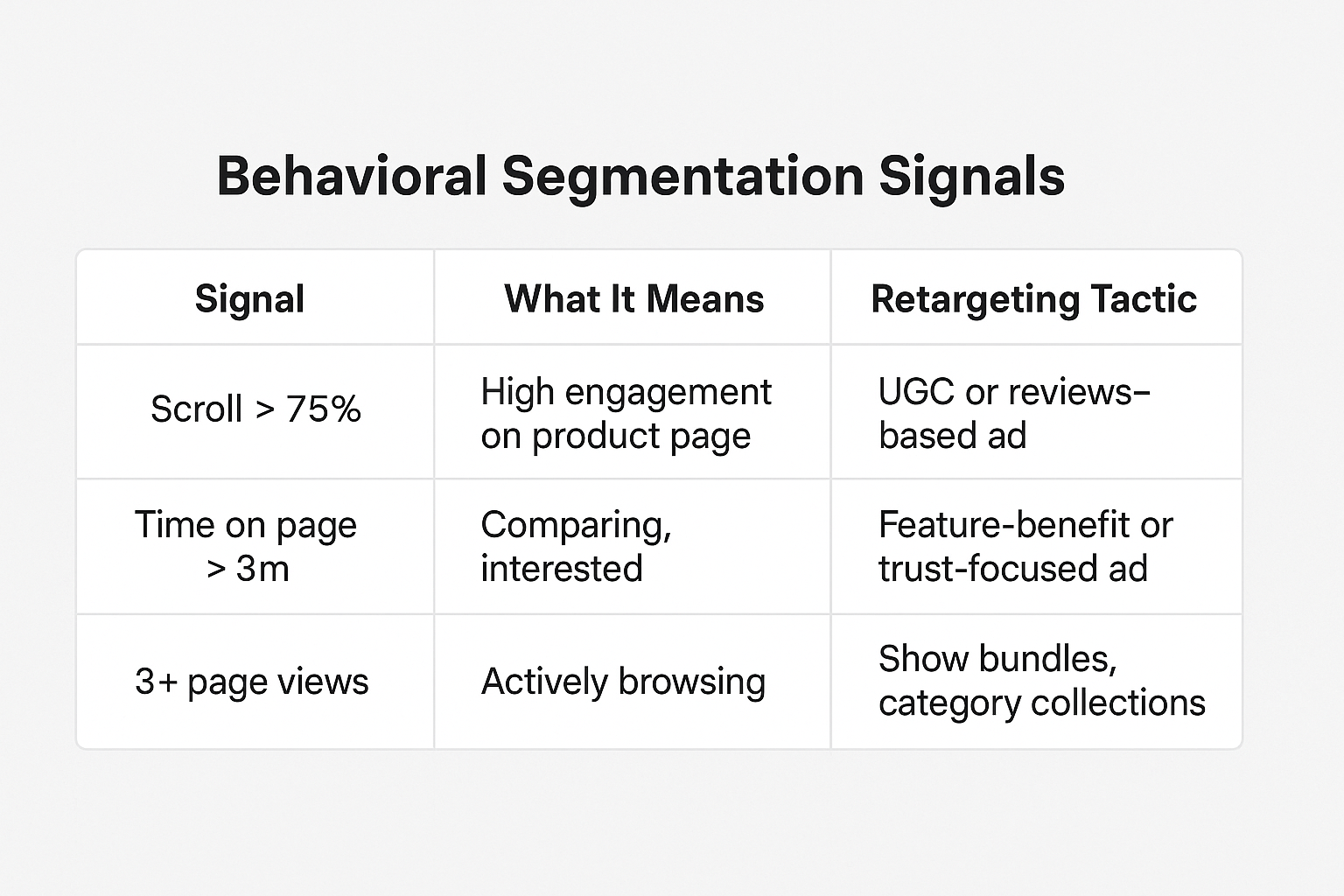
Here are the key behaviors to watch for and what to do with them:
-
Scroll depth: If a user scrolls past 75% of a product page, they’ve likely read the copy, looked at reviews, and are showing buying intent. Retarget them with ads that reinforce trust, like customer testimonials, expert endorsements, or UGC. Learn how to implement this in Behavior-Based Facebook Targeting: The Secret Weapon of Top E-commerce Brands.
-
Session time: If someone spends more than 3 minutes on your site, especially on a single product or collection, they’re likely comparing. Serve them a benefit-focused ad that reinforces value — maybe with a limited-time bonus or price guarantee.
-
Page depth: If a user visits 3 or more pages (e.g., product, FAQ, shipping info), it signals deeper interest. Retarget them with educational or social-proof content — such as a quick explainer video or a “Why Customers Love Us” carousel.
This level of segmentation gives your campaigns more precision — and your budget more power. When you retarget based on real behavior, you stop guessing and start converting.
2. Rotate Message Angles Throughout the Retargeting Journey
Refreshing creatives is good — but rotating your messaging strategy is better. People don’t respond to the same nudge twice. The best retargeting campaigns tell a story over time.
Here’s how to think about structuring a multi-stage messaging journey:
-
Days 1–3 — Introduction & value: Focus on product benefits, features, or your unique selling proposition (USP). For example, “Why 50,000+ athletes trust our gear.”
-
Days 4–7 — Social proof: Bring in customer reviews, star ratings, testimonials, or influencer quotes. This builds trust and reduces decision anxiety.
-
Days 8–10 — Urgency or scarcity: Add subtle urgency like “Selling fast” or “Limited sizes left.” Try countdown timers or weekend-only sales.
-
Days 11–14 — Emotional angle or brand story: Share your company’s mission, behind-the-scenes content, or founder story. This strengthens the emotional connection, especially for higher-ticket products.
Each message angle hits different buying motivations — logic, trust, fear of missing out, and emotion — instead of repeating the same pitch. You can map these steps using Facebook Ads Funnel Strategy: From Audience Identification to Conversion.
3. Retarget Users Who Clicked but Never Visited the Site
Yes, this is possible — and powerful. Sometimes people click your ad but bounce before the page even loads. Slow load times, bad mobile connections, or short attention spans can cause this. But if they clicked, they were interested.
To win these users back, build a custom audience of ad clickers who never triggered a PageView event. Then, re-engage them with:
-
A faster-loading landing page: Especially important if your original page was image-heavy or not mobile-optimized.
-
An Instant Experience (Facebook) or Lead Form ad: These keep users in-app, so you bypass loading delays altogether.
-
Short-form content: Try a punchier ad with a clear CTA and minimal distractions, targeting the same curiosity that led to the original click.
If you’re getting lots of clicks but low site traffic, you might be facing a conversion tracking or delivery issue. Troubleshoot it with Facebook Ads Not Converting: How To Fix It.
4. Retarget Based on Micro-Engagement Signals
Not everyone who engages with your content is ready to buy, but that doesn’t mean they’re not valuable. In fact, soft engagement is often the first step toward conversion — especially in longer decision cycles.
Here’s how to tap into that potential:
-
Video watchers: Retarget people who watched at least 50% or 75% of your product explainer. Follow up with a carousel of FAQs or an offer ad.
-
Instagram or TikTok engagers: If someone liked or saved your post but didn’t visit your site, retarget them with user-generated content or a “Shop This Look” ad.
-
Newsletter readers or blog visitors: Target users who clicked through your content but didn’t buy. Serve them ads that build on what they read — like a curated product list or case study.
This is how you keep your brand in the conversation without being pushy or repetitive.
5. Exclude Chronic Non-Converters to Reduce Waste
Some users are just not buyers. They might click five different ads, visit your site 10 times, and bounce in under 20 seconds every time. You need to know when to stop retargeting.
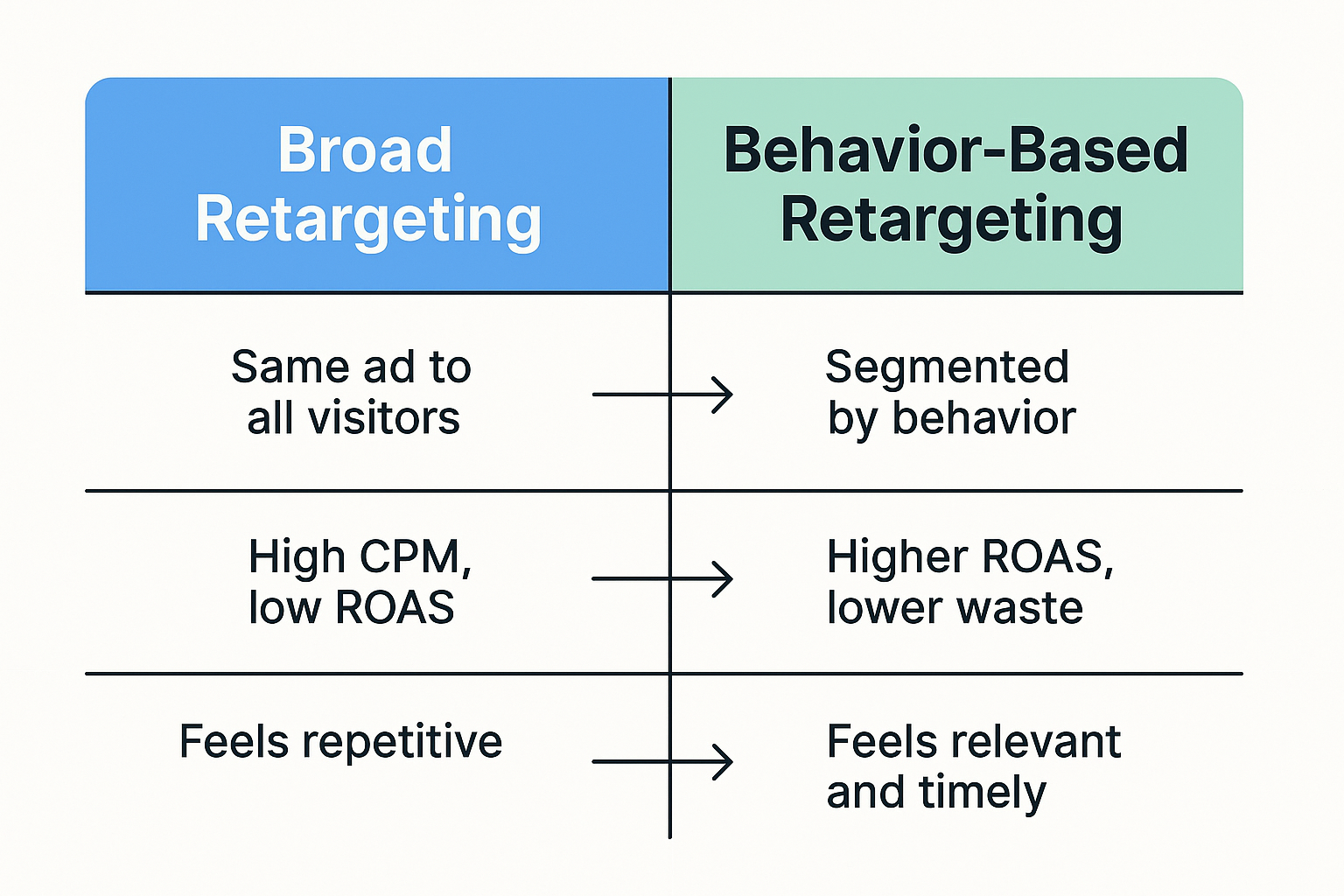
Here’s what to watch for — and how to act:
-
Multiple ad clicks, no conversion: Set thresholds (e.g., 3+ clicks, zero purchases) to exclude these users from future campaigns.
-
Bounce-prone traffic: If someone leaves within 5 seconds repeatedly, they’re likely not your audience — or they’re a bot.
-
No scroll or interaction behavior: Users who trigger a pageview but don’t scroll or click anything likely aren’t seriously interested.
For further tips on identifying low-value audiences, see Retargeting vs. Broad Targeting: Which Strategy Drives Better Results?
6. Reinforce Email or Organic Campaigns with Paid Retargeting
Your email campaigns don’t need to work alone. Neither do your organic efforts. Use retargeting to multiply their impact and reinforce your messaging across channels.
Examples of smart integrations:
-
Email opens with no click: Retarget users who opened a product announcement email but didn’t follow through. Show the product visually in an ad, with a link to buy.
-
Instagram post viewers: Retarget people who engaged with a product teaser or carousel but didn’t click the bio link. Serve a targeted collection ad.
-
Organic blog readers: Someone read your blog post on “Top 5 Supplements for Sleep”? Retarget them with a product bundle ad focused on sleep support.
Looking to build a stronger cross-channel connection? Explore How to Optimize Email Marketing with Facebook Ads.
7. Build Micro-Funnels for High-LTV or High-Ticket Products
Not every product should be treated the same. If you’re selling high-ticket or high-LTV items, users need more steps, more touchpoints, and more confidence before they’ll convert.
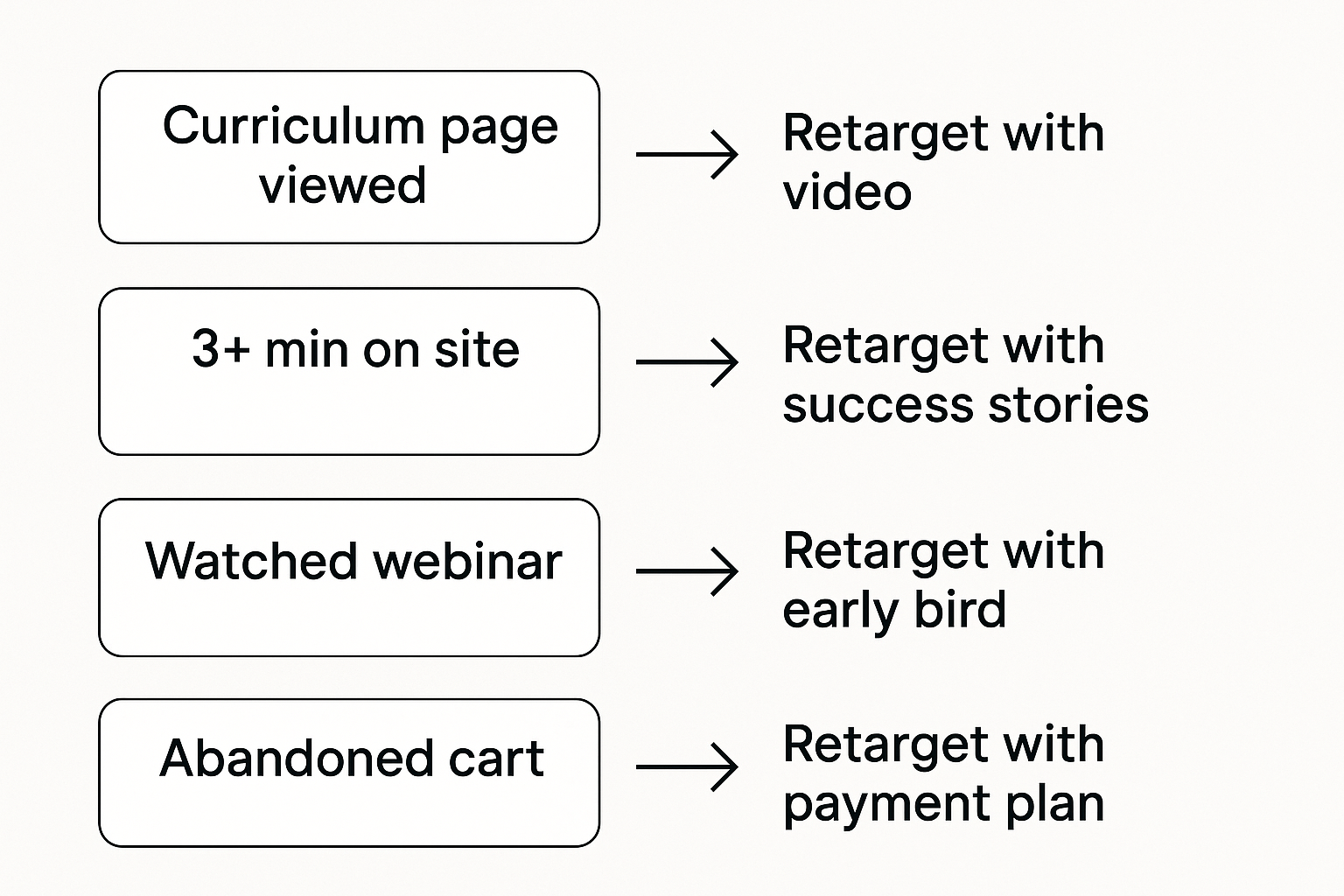
For example, imagine you’re selling a $999 online certification program. Your micro-retargeting funnel could look like this:
-
Step 1 — Visited the curriculum page: Retarget with a short video showing what students achieve after the course.
-
Step 2 — Spent more than 3 minutes on the site: Retarget with student success stories, especially with recognizable brands or testimonials.
-
Step 3 — Watched 50% of your webinar or promo video: Serve a time-limited early-bird discount offer.
-
Step 4 — Abandoned checkout: Retarget with payment plan options or a personal message from the founder.
For big-ticket offers, your retargeting should behave more like a personalized sales process than a reminder system.
Final Tips to Keep Your ROAS Healthy
Retargeting is a powerful tool, but it needs maintenance. Here are essential tips to keep performance high while avoiding burnout:
-
Set frequency caps: Aim for 3–5 ad impressions per user per week to avoid overexposure.
-
Exclude recent purchasers: Especially if your product isn’t bought frequently. You can always re-engage them later.
-
Test different ad formats: Try static image ads, short-form videos, product carousels, and collection ads to find what resonates.
-
Measure ROAS by segment: Don’t just rely on account-wide averages. Break it down by audience type, creative, and campaign.
-
Refresh creatives regularly: Even your best ad will lose power after 4–6 weeks. Update visuals, headlines, and offers to stay relevant.
Small tweaks here make a big difference — the brands that monitor and adjust consistently tend to outperform everyone else.
Final Thoughts
Retargeting is no longer just about “reminding” people to buy — it’s about strategically guiding them to convert.
If you treat retargeting like an afterthought, your results will always feel average. But if you treat it like a system — one that reflects user behavior, intent, and timing — you can transform ROAS from good to exceptional.
Want a practical walkthrough to set your campaigns up? Start here: How to Set Up Facebook Retargeting.
Now’s the time to rethink retargeting — and finally get paid for every click you earned.
